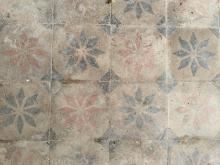Which piece of land in Hong Kong has been re-developed most often?
Primary tabs
Here's the plot we've been looking at recently, which currently has it's fourth-generation building under construction:
So far we've seen:
- Late 1890's: As with many areas of Hong Kong, the story starts with reclaiming new land from the sea. Once the land was ready, two buildings were built here. On the North, the Telegraph Office looked over Connaught Road to the sea wall and the harbour. On the South, the Hong Kong Club Annexe looked across Chater Road to the cricket pitch.
- Post-war: I wonder if the Telegraph Office was badly damaged in the war, as it was demolished in 1948. In its place rose the new Electra House, later renamed Mercury House. The Hong Kong Club Annexe survived til the late 1960's when it was replaced by Sutherland House.
During this time, reclaimation took away their harbourfront location, and relocation of the cricket pitch meant they got a view of Chater garden instead. - 1993-2008: The next re-development followed two of the trends in Hong Kong's construction: taller buildings, and larger plots. The new Ritz Carlton Hotel occupied the land previously occupied by two buildings.
- 2009: Today we can just see a construction site, but it won't be long before the new building appears: the headquarters building for the China Construction Bank (CCB).
The 'larger plot' trend should have continued, but was interrupted by the 1997 financial crisis. Wikipedia writes:
[...] LSD intended to combine the Furama plot with the Ritz Carlton plot, which it already owned, for redevelopment into a prime office block. Then the Asian financial crisis struck, plunging the entire group into distress and forced asset sales.
Another trend is the shortening cycle between redevelopments. The first generation lasted over 50 years. The Ritz-Carlton just 15. How long will the new CCB building stand for?
So, four generations in just over 110 years. Can any other plots beat that? How about areas of Central or Wanchai that were first built on over 50 years before this piece of land was reclaimed?
For more information and photos of the individual buildings, please click the links below:


Comments
Re: Most Redeveloped Plot - HSBC
The HSBC site ranks up there too - with four versions of the bank built on the same spot from 1865 to 1985, when the latest version by Norman Foster was finished. The first one was constructed 1865, around the time the first reclamation that created des voeux road was completed. The second one lasted from 1882 to the 1930s, when the site was expanded to include most the City Hall, (c1865), and create the iconic Art Deco structure that lasted till the 80s. So no longer than 50 years for each building!
this was the second version
http://hkclweb.hkpl.gov.hk/hkclr2/igateway?svc=ctcvr&hid=7&itemid=7&ss=ContentPhoto&litemid=752055&lsubj=S0000DC9&lcol=M000000A&lcat=M00000B6&llvl=
Where next?
80sKid, thanks for that. So there's at least two 4-generation plots. Any that are 5 or more?
Which plot shall we work through next? The HSBC site looks like a good candidate - any other recommendations?
Re: How about 'Lot 1'?
Hi there,
How about 'Lot 1' - East Point? If we count the very first establishment there since Jardines took it, it would certainly be something. The lot would include present day Paterson Street residential blocks, Windsor House, Hang Lung Centre, The Plaza Hotel, The Excelcior, The World Trade Centre, as well as the two residential towers at East Point Road with the shipping centre linking up with the Excelcior and the World Trade Centre.
Anyway these were of the later stage of development, which probably were built in reclaimed and. The original East Point should be closer to East Point Road, hence the name of it. Taking note of this the lot would probably included the blocks going towards Percival Street, Yee Wo Street, Jardine's Bazzar, Jardin Street.........
Best Regards,
T
Multiple Re-developments on a Single Plot of Land
Queen's Road being the first road in Hong Kong would hold the record for multiple re-developments. I think if one were to concentrate in a smaller area, let's say Queen's Road Central between Ice House St and Pedder St, one can see the transformations that have taken place and the different buildings that have been erected over the last 150 years.
Queen's Road, and East Point
These are certainly the oldest areas for colonial buildings. Even the HSBC plot looks as though it came later, on land reclaimed between 1843 and 1856 (see the maps on plates 3-1b and 3-1c, Mapping Hong Kong).
To make a start, for East Point I've created a place for the Excelsior Hotel.
For the Ice House St - Pedder St block, the south half was built on first. I've created places for York House, Edinburgh Tower, and Central Building, the three buildings on that land today.
If you know the buildings that came before these, please go ahead and create the places for them.
Regards, David
Junction of Queen's Road C and Ice House Street looking West
1870s Queens Road Central from Murray Battery. The twin towers of the original Roman Catholic Cathedral on Pottinger St and Pedder St Clocktower can be seen.
1890s
The second building on the right was known as Astor House and later the St Francis Hotel. They were demolished in the 1930s to make way for the Gloucester Building and Marina House.
1910s
1930s
1950s
re: Junction of Queen's Road C and Ice House Street looking West
Thanks Moddsey - you've done a great job of finding the same view over the years. It really highlights the changes.
Is it my imagination or was the old Queen's Rd a lot narrower than today?